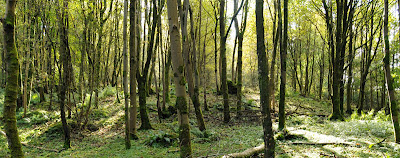Few birds promise so much yet deliver as little as the
Rough-legged Buzzard. I first encountered one four, nearly five, years ago now.
It was love at first sight. That first sight; side-lit in the golden winter
afternoons of the north Norfolk marshes, thrilled me. All it had to do was sit
on a fence post, in a field, as I watched, rapt. I like arctic birds, I like
raptors; but arctic raptors are something really special indeed.
That year was a fabulous year of carefree birding for me: a
year of burgeoning confidence in my own abilities and widening horizons. I fell
in love with Scotland that year. Nostalgia foreshortens the gaps between the
successful trips and the lifers. And there were lots of those. But amongst them
all, the Rough-legged Buzzard by Burnham Norton marsh remains a cherished
birding memory.
(That first rough-leg)
It spoiled me, I think. Now I wonder if crossing the North
Sea is so exhausting, they have to spend winter sitting down to recuperate.
***
It’s a clear day. The rain has gone, for a day at least, though
its replacement is a bitter wind. On the western horizon lies Cantley Beet
factory, and the steam from its cooling towers exits at a right angle. It’s
five miles away and between us a dull green expanse of nothing-much marsh. Mud,
grass, rivers and gates sprinkled apparently at random. Fritton, Chedgrave,
Cantley, Furlton, Norton, Thorpe and Reedham Marshes all spread out in front of
me. Dad and I, standing on the edge of the higher ground of Waveney Forest were
the first thing the wind hit for those five miles; and it gleefully ripped
through coats and gloves and shook the scope just to make things difficult, as
well as cold.
These
marshes are a desolate place. It doesn’t help that the fingerprints of man are
all over it. In the gates, the raised river banks, the windmills that mark off the
different marshes, the train track that splits into two and runs either side,
the pylons, the bridge and the A143 in the distance… The landscape is cold.
Unremitting. Man’s additions are functional, utilitarian. The only scenic additions
are the windmills, the ghosts of agriculture past.
Another
birder found it first. Taking the directions, we find the rough-leg. Or we
think we do. Nobody was really sure: sat at nearly a mile, identification is by
percentage; probability of what it looks most like. What we conclude, when
we’re certain it’s not a goose, is that it’s a large greyish brown raptor, pale
headed and pale tailed. The rest exists in uncertainty. It probably was the
Rough-legged Buzzard was my conclusion, but it was hard to conclude anything.
By behaviour as much as anything else. Ever since the Burnham Norton bird, the
rest I’ve seen have all been sat on the opposite ends of whichever rain-sodden marsh
I find myself at. I don’t think they fly at all, which, oddly, must be about
their only similarity to Coots. But for a high-arctic, charismatic, scarce, and
exciting species, they seem determined to be a damp squib, everytime.
***
After, we
headed to Buckenham Marshes. Home of England’s only regular wintering flock of
Taiga Bean Geese. Except not today. Today it was almost completely bereft of
birds except for Wigeon, Kestrel and this Pied Wagtail.
The
Kestrels were frantically hovering as if it were the only way to keep warm. We
hid in a hide, overlooking a mammoth, thousand-strong flock of Wigeon...
...Wondering
what happened to all the birds? Is this the worst winter in a decade for
wintering bird numbers?

















































